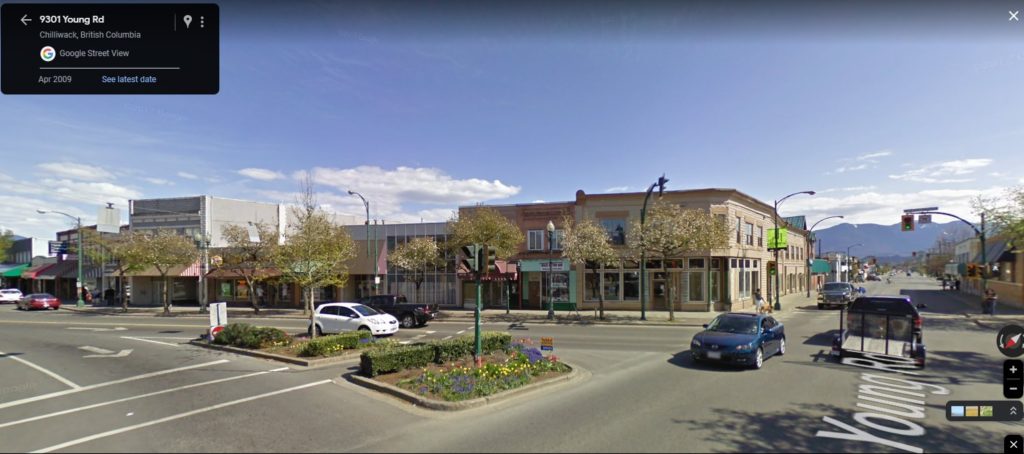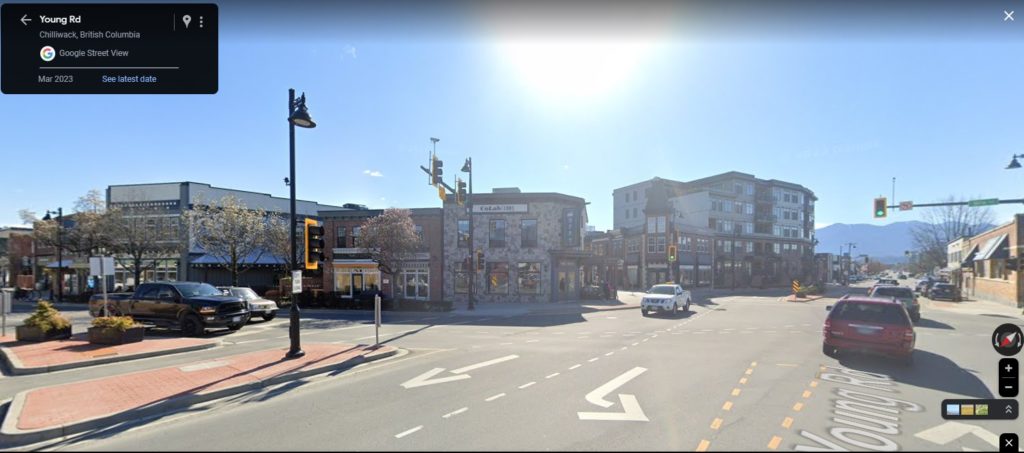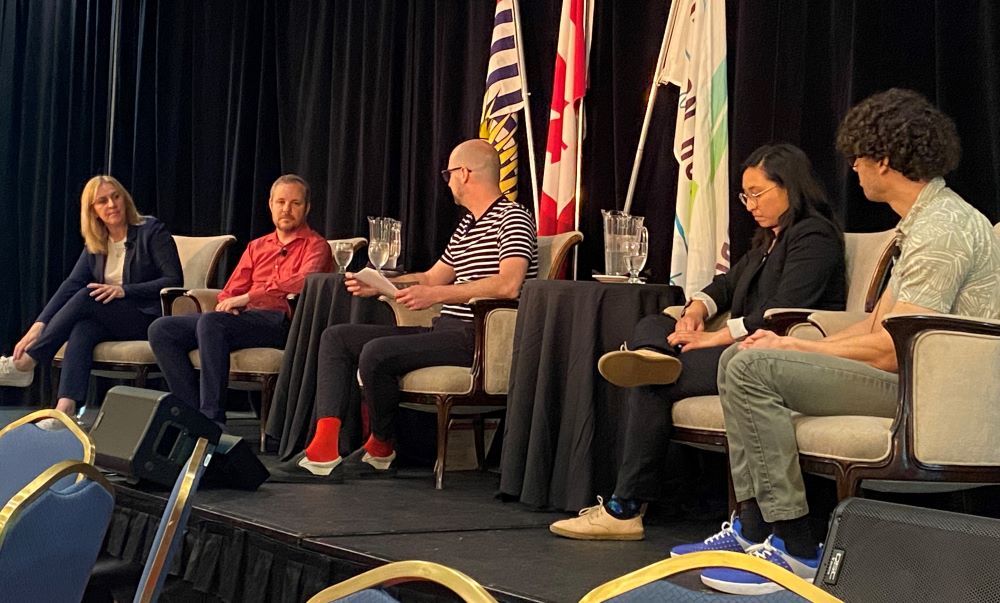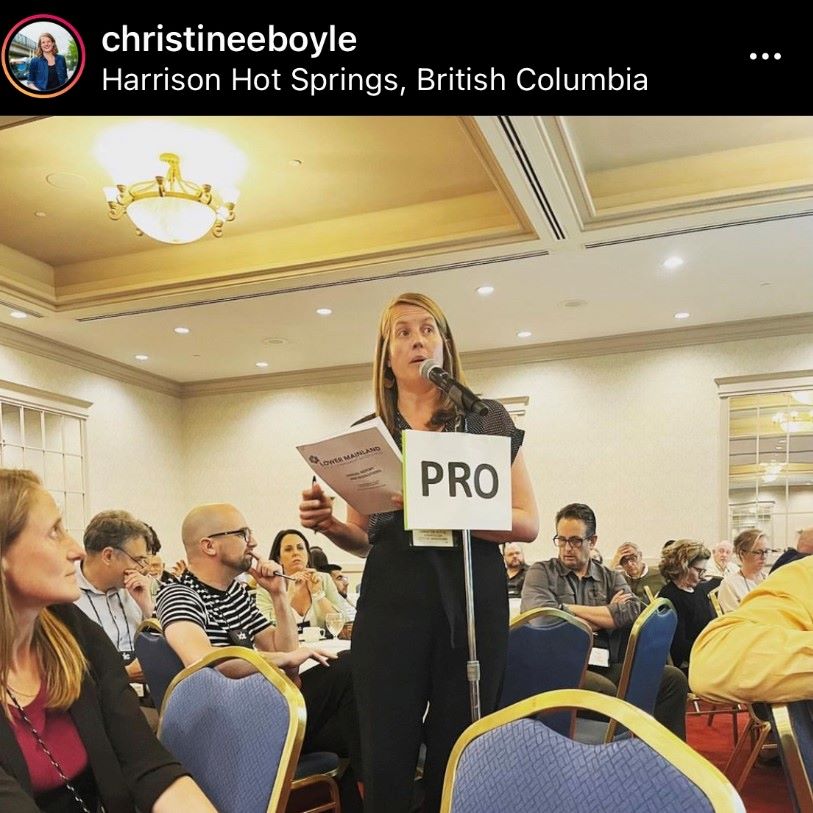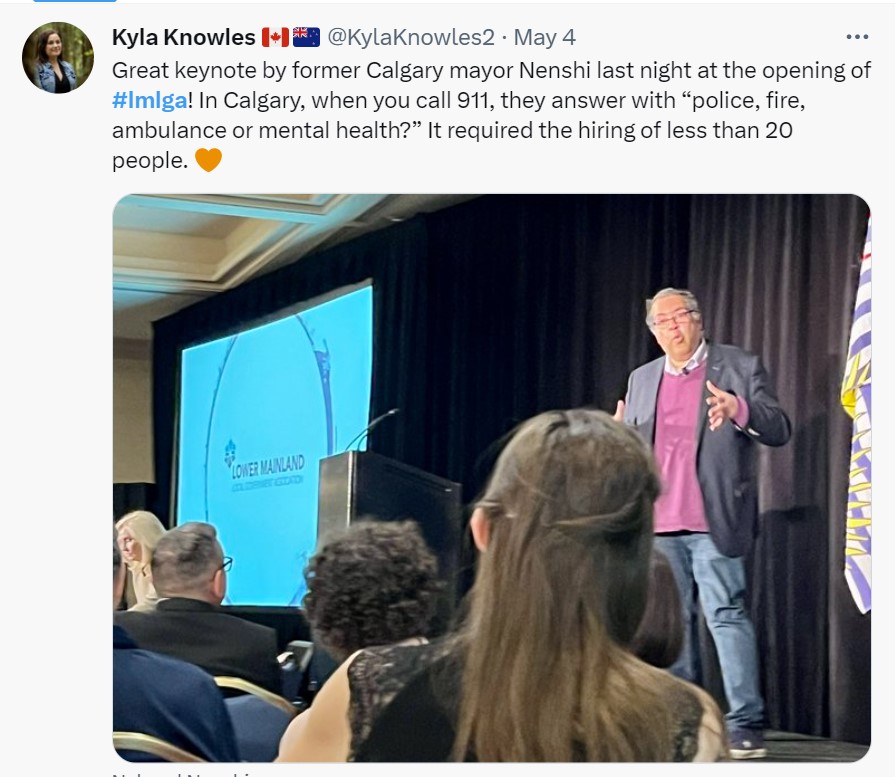We had quite an eventful Council Meeting this week, and I’d suggest you make sure you read to the end, but we didn’t get to the end, so surprise there: It will all make less sense when you get there, and you can draw your own conclusions. Nonetheless, the agenda was a full one, starting with an Opportunity to be Heard:
Inter-municipal TNS (Ride-Hailing) Business Licence Scheme Bylaw No. 8391, 2023
The City of New Westminster has an agreement with many other municipalities to share the business licensing of ride-hailing services. Essentially, the companies buy a license in Vancouver that applies to all municipalities, and we split the revenue. This change to that scheme would bring Mission, Kent and Hope into the fold. This change requires an Opportunity to be Heard. We received no written correspondence, and no-one came to speak to the change at Council. Council voted to approve the change.
We then had a Report for Action:
Rezoning Application for Conversion to Supportive Housing: 422 Sixth Street
This is a building in the Brow of the Hill that has operated as an office building, but is already zoned mixed use (it can have residential and office use above the commercial at grade). The owner wants to operate it as supportive affordable housing on the top two floors and continue to operate an office on the ground floor. This is compliant with the OCP and zoning, except the zoning language does not include “supportive” housing, so this is the rezoning request to add that language. This came to Council as a detailed report on the nature of that rezoning, with staff asking for anything we want added ot the empowering Bylaws, so we can consider approval at a future meeting. There was also a request to waive the Public Hearing, as the project is compliant with our OCP and stated City priorities.
We had some delegates speak for and against this project, and unfortunately, incorrect information circulating in the neighbourhood about the project appears to have taken a foothold. There was a lot of conflation between this type of supportive housing and emergency shelter, which demonstrated the need for us to have a public meeting and do further outreach about the truth of the project.
Council voted to approve the bylaws being prepared and the project to come to a future Council meeting for a vote on approval or rejection. In a move I do not remember seeing in my 8+ years on New West Council, we had council members voting against even considering bylaws on an affordable and supportive housing project. The same members voted against an amendment to have a public meeting about the project so the community can more clearly understand the project and Council can hear from the public in a constructive dialogue. Fortunately, the majority of Council voted for consultation, and will consider the approval after that consultation.
We then moved the following items On Consent
Rezoning Application: 805 Boyd Street (Queensborough Landing) – Preliminary Report
The Queensborough Landing commercial area wants to expand its offerings and are requesting expanding the permitted land uses on the site to include breweries, wineries, arcades, commercial schools, and more. They are all pretty typical of this type of “highway commercial” areas, and are not likely to conflict with other land use on the site.
This is a preliminary report, as this application will go to internal review and public consultation, but as it is consistent with the OCP, we will waive the Public Hearing. If you have opinions, let us know.
Rezoning Application for Duplex: 902 First St – Preliminary Report
The owner of this property in Glenbrook North wants to build a duplex where there is now a single family home, which is consistent with the OCP, and no variances from the Interim Policy (based on RT-1), but needs a rezoning. This is a preliminary report, and will go to some public consultation, but as it is consistent with the OCP, we will waive the Public Hearing. If you have opinions, let us know!
Street and Traffic Bylaw Amendments for Three Readings – Bylaw 8397, 2023
This is a bit of a housekeeping change to the Streets and Traffic Bylaw, updating some of the language to match the new Active Transportation Network Plan, remover reference to insurance expiry date stickers as they don’t exist anymore, and other minor updates.
Sustainable Transportation Zoning Bylaw Amendments –Transportation Demand Management and Right-Sizing Parking
This is a zoning amendment bylaw to update our requirements for off-street parking in new multi-family development. This is part of a longer process we have been undergoing to modernize our off-street parking requirements, as part of our ongoing and constant review of Policies, Procedures, and Processes to assure they are current and appropriate. This part seeks to better balance the modern (and reduced) need for parking with the (increasing) cost of building and our other climate and livability goals (which both require less dependency on cars).
The change in requirements is based on analysis of vehicle ownership trends in New West and in our cohort communities, and through benchmark comparisons with other Metro Van jurisdictions, and through consultation with the development industry.
In short, the proposal reduces the number of parking spots that need to be built in in secured rental, in the Downtown neighbourhood, and in areas with high transit service, along with requiring better end-of-trip facilities for other modes (Bicycle storage rooms in residential, other facilities in Commercial). We are also removing the part of the bylaw that limits reductions in parking spaces – if a development can make the case for any level of reduction, we will hear that case instead of there being an arbitrary minimum. This opens the door a bit more for parking-free developments in the City.
Or more this is a preliminary report on a proposed change that will, again, go to public consultation, but as it is consistent with the OCP, we will waive the Public Hearing. If you have opinions, let us know!
The following items were Removed from Consent for discussion:
Extension of Committee Member Terms
As we look to implement new model for Advisory Committees, including an Advisory Assembly model, staff are outlining the time that will be required to get us there, and we need to set up a schedule for the existing Advisory Committees and Grant Committees so we don’t have a gap in functionality.
Liquor Primary Patio Application (Thirsty Duck Pub) for 606 Twelfth Street
The Thirsty Duck has been operating a seasonal outdoor patio since COVID led to a shift in regulation of patios. They have not caused any problems, or generated any complaints, and the Duck now wants ot make this patio a permanent feature. So Council needs to approve and needs to send a resolution to the LCRB to assure them we are fine with the liquor license operating in this way. So we are doing both.
New Westminster Rent Bank Funding Request
The Rent Bank is a program that started in 2017 in New West, and is now funded primarily by the Province (an example of uploading?) and is operational in many municipalities across BC after New West set the example. It is an emergency short-term interest-free loan program to help people who get into Rent or Utility arrears such that they run the risk of being evicted and made homeless. This is proactive avoidance of homelessness. It is also a contact point for community-based programming for people who are precariously housed, including credit counselling and food security and health care services.
This program is a partnership, and the City has been contributing $35,000 per year to cover a portion of the administrative cost, which allows the Rent Bank to operate 5 days a week. This report is asking the city to continue this commitment for three more years, and was supported by Council.
Rezoning and Special Development Permit: 808 Royal Avenue (Douglas College) – Preliminary Report
Douglas College wants to build a new building on the empty lots across 8th Street from their New West Campus. The plan is to have a 20-storey building with 244 student housing units and academic spaces on the lower floors. This is consistent with the OCP and the Downtown Community Plan, but the site needs a rezoning.
This is a preliminary report outlining the plan, and the project will need internal review and public consultation, but as it is consistent with the OCP and meets City Priorities, we will be waiving the Public Hearing. If you have opinions, let us know.
Welcome Centre Update and Funding Request
The Welcome Centre at NWSS is a partnership between the City, the School District, and service organizations supporting newcomers and their families. The City funds a “navigator” position to work in the centre and direct clients toward services they may require. We have applied to IIRC (the federal government) to help fund this position, as we are somewhat making up for gaps in the immigration systems that make it hard for recent arrivals to access these types of services, however we were not successful in getting the position funded for 2024. We will re-apply for 2025-2026, but need to commit to the position beforehand, which Council did.
Correspondence: Metro Vancouver letter dated May 16, 2023 regarding Land Use Designation Amendment to Metro 2050 Township of Langley – Gloucester Industrial Park
This is an application before Metro Vancouver to have 14.6 acres moved from Agricultural use outside the urban containment boundary to turn it to industrial land. This is adjacent to the Gloucester Industrial Park, but the land was previously (until recently) protected by the ALR. This change of the Urban Containment Boundary requires an amendment to our regional plan, which requires support of 50%+1 through a weighted vote at Metro Vancouver Board to be approved. This correspondence is our notice that we have until July 4, 2023 to the Board (as do members of the public and affected stakeholders).
Council moved the following resolution in response:
“ Council write a letter to Metro Board expressing concerns about erosion of the Urban Containment Boundary, citing its vital role in maintaining a stable, long-term footprint for urban development while reinforcing the protection of agricultural, conservation and rural lands for ecological and climate values. Sprawl of developed land outside of the UCB, whether for residential or commercial purposes, increases the cost of servicing these lands, undermines our regional transportation goals, and challenges our regional sustainable growth goals”
We then Read some Bylaws including the following Bylaw for Adoption:
Inter-municipal TNS Business Licence Agreement Bylaw No. 8393, 2023
As discussed above, this bylaw that expands the agreement among participating municipalities regarding an Inter-municipal Transportation Network Services (i.e. Ride-Hailing) Business License program was Adopted by Council. It’s the law of the land now, if the other 30 Municipalities agree.
Then on to everyone’s favourite section of the evening, Motions from Council:
2024 Police Budget
Councillor Nakagawa
Be it resolved that New Westminster City Council writes to the Police Board requesting to engage in collaborative dialogue about the 2024 Police Budget on an ongoing basis beginning in spring 2023.
City Council is required by law to approve a police budget, but we are not deeply involved in the creation of that police budget (though it represents the largest single departmental budget in the City). That is the work of the Police Board, along with setting the policy of the Police department. Under the Police Act, the Police Board is struck to specifically keep City Council (and therefore politics) separate from police operations, but the relationship over the budget is a bit more nuanced.
The idea that the Police Board and the City Council should have a collaborative dialogue about the budget during its development seems common sense. That said, it is up to the Police board to determine the budget development process that works for them, so this is an invitation from Council, and it will be up to the Police Board to decide what to do it. Council approved this request, and we will see where it goes.
I do note that the Police Act creates this weird situation where I, as the elected Mayor, am the spokesperson for both Council and the Police Board, so I should clarify here my comments are as Mayor and chair of City Council (though, of course not official City Communications, as this is my blog, not a city website), and not as Chair of the Police Board. Maybe I’ll blog out later how the Police Board reacts, but in the meantime, no-one is more aware than I of the weirdness of my conflicted position, and the role of Provincial Legislation in creating this conflict, and the challenges of doing this kind of open and transparent discussion with residents while I am doing these two jobs. Government just isn’t set up for this kind of direct and informal communications, but here we are.
Establishing a new Planning Policies, Procedures and Processes Working Group
Councillor Fontaine
BE IT RESOLVED that Council establish a Planning Policies, Procedures and Processes Working Group; and
BE IT FURTHER RESOLVED that once established and members of the Working Group are appointed, it be provided with up to 120 days to prepare a report to Council which includes recommendations regarding possible revisions, updates or the elimination of any unnecessary, outdated, costly or ineffective planning by-laws, policies, procedures and processes;
BE IT FURTHER RESOLVED that Council appoint two city councillors to co-chair the Working Group and that they develop the terms of reference, and prepare a budget (if required) for approval by Council; and
BE IT FURTHER RESOLVED the co-chairs will recommend to Council the overall composition of the Working Group; and
BE IT FURTHER RESOLVED that all efforts should be made by the Working Group to utilize external resources as a means of limiting staff time required to support this initiative; and
BE IF FURTHER RESOLVED the representatives of the Working Group will represent the diversity of our community and that the consultation they undertake will be done so in an equitable manner
I was challenged with this set of recommendations, and was happy Council did not support this motion. It seemed to want to duplicate processes that are already going on in the City by adding a layer of bureaucracy, and appears to me to demonstrate a lack of understanding of what those processes are, which is disappointing after the work we did to onboard Council.
For example, earlier this meeting we had the item called “Sustainable Transportation Zoning Bylaw Amendments” which was part of exactly this – an updating of significant planning policies and procedures that came from staff continued effort to update and streamline policies, procedures and policies. We also recently approved a budget that included specific line items that addressed exactly this, from the update to the infill housing guidelines and new draft development permit guidelines and the new duplex/triples application approval process, to our planned “one stop shopping” eGov services program and transition to digital submissions of permit applications for review, inspections and approvals including digitization technology and resources. The conceit of this motion is that a couple of Councillors will direct this continuous improvement better than the professional staff doing this every day.
We have a process to (for example) continually review and update our zoning bylaw and processes that underlie it, including the recent changes that have provided more flexibility to waive Public Hearings and to fast-track affordable housing projects in the City where there are senior government funds on the table (something the mover of this motion seemed to express concern with in earlier conversation in this very meeting).
The point it, this work needs to be (and is) directed toward identified process problems or delays and are prioritized based on our Housing Needs Assessments. If, as this motion suggests, there are “concerns expressed about processes, procedures and policies”, then let’s have a conversation about those items. But the solution is not and un-costed and unclear fishing expedition led by a new layer of bureaucracy to add to the work load of staff already engaged in this work, especially as we are resource challenged right now.
Supporting the victims of random and violent crimes in New Westminster
Councillor Minhas
BE IT RESOLVED that the Mayor, on behalf of Council, write to the Federal Minister of Justice, the Premier of British Columbia and the BC’s Solicitor General requesting that every effort be made to reform our ‘catch and release’ justice system which is facilitating repeat and prolific offenders being allowed to roam New Westminster’s streets; and
BE IT FURTHER RESOLVED that Council endorse a request made in February 2023 by the Business Improvement Areas of BC to establish a new provincially funded program which supports initiatives aimed at curtailing the impacts of vandalism and property crime; and
BE IT FURTHER RESOLVED that Council request an urgent meeting with the New Westminster Police Board to develop a joint strategy and determine what additional initiatives can be immediately implemented to ensure our streets remain safe from further violent crime.
As these three measures appeared quite disconnected, it was moved to sever into three separate motions.
On the first resolution, there was some concern expressed by council about the suggestion that the Mayor should send opposition party speaking points (both Provincial and Federal) to the governments, as this did not seem conducive to a clear outcome, bereft of context or a clear ask.
I felt the need to point out that the recent announcement by the provincial government around the creation of the Hub model in communities including New Westminster, where police, dedicated prosecutors and probation officers are working together as part of the Repeat Violent Offending Intervention Initiative, demonstrates that the province is already taking this issue seriously and are taking new an innovative approaches to that issue. Further, the introduction of Bill C-48 represents as similar refocusing on the issue by the Federal government, focusing on bail reform in a way that keeps violent offenders of the street in a way that would survive a charter challenge.
Of course, I believe that everyone has the right to feel safe in our community, and the mutli-faceted approach that target the root causes of these types of crimes while assuring the justice system has the tools it needs to protect the public from those few who commit the most atrocious violence in our communities is the right approach. I support the work the provincial and federal governments are doing now, and am not convinced my sending them opposition speaking points now is going to make any material difference. Council did not support this resolution.
On the second resolution debate was cut short because the meeting hit 10:30pm, and our Procedure Bylaw requires 2/3 of the Council to vote to extend beyond 10:30. Much to my surprise, the member who brought this resolution, and the member who brought the following resolution on the agenda voted to NOT extend debate on their own resolutions, and instead wanted the meeting to adjourn. I can’t explain that.
So we wrapped at 10:30 with a bit of an abrupt ending to the meeting. The unaddressed issues will come back (presumably) at the next meeting, though there is a time sensitive item later in the agenda that will likely require an emergency meeting. So stay tuned!
